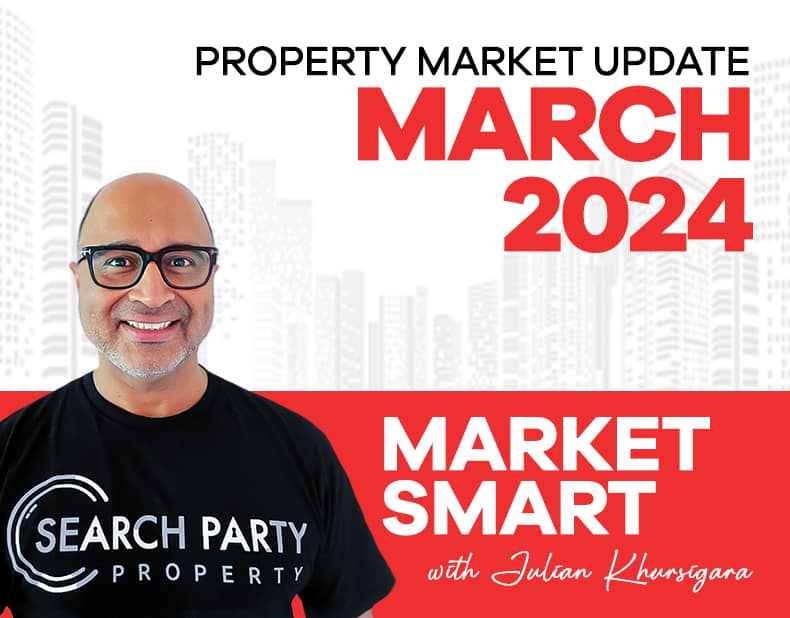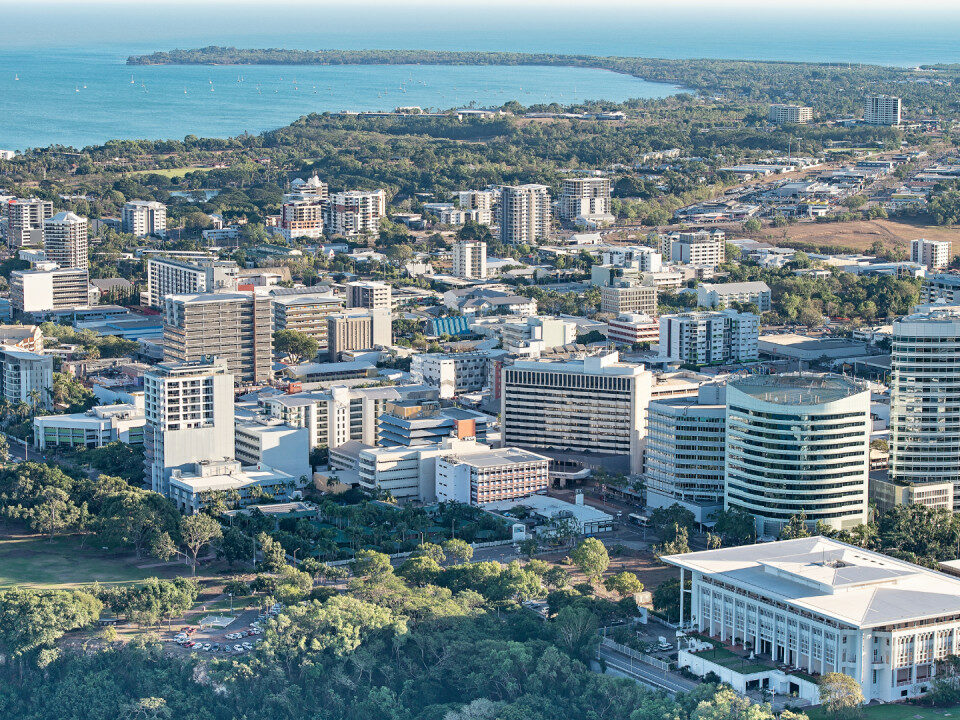- The first step is making the call.
- 1300 022 482
- hello@searchpartyproperty.com.au
As of 30th November 2021 – Property Market Update
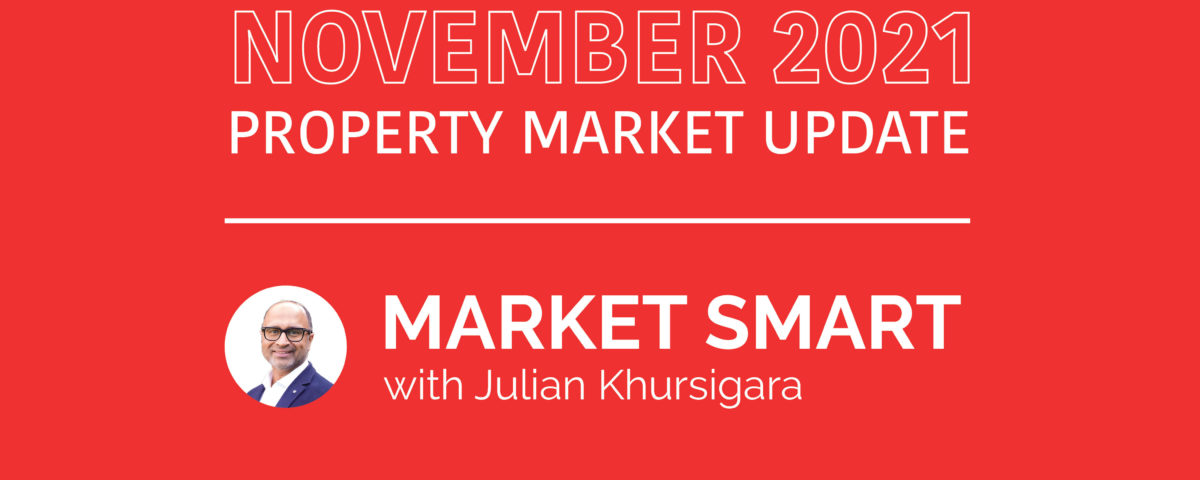
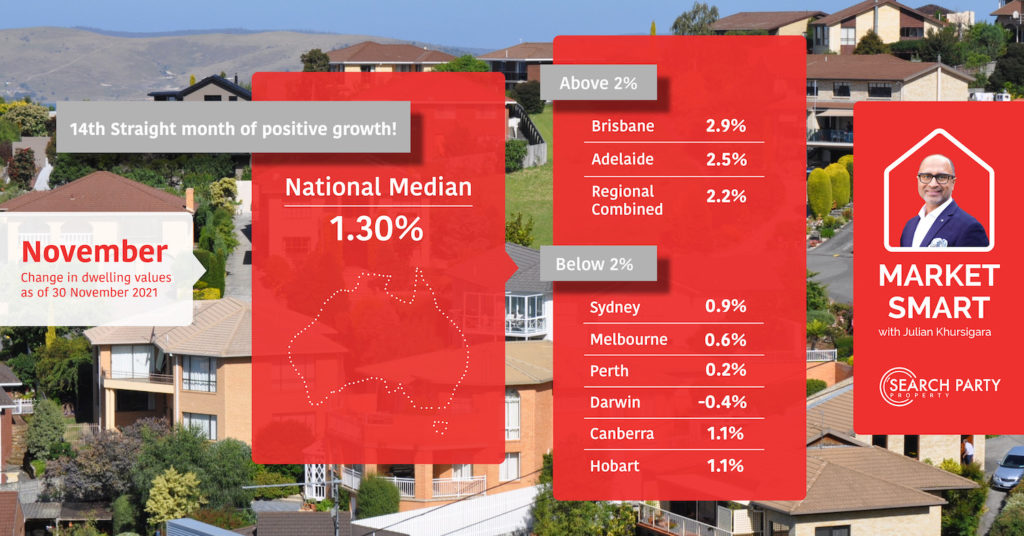
It is now impossible to deny that the national property market is cooling, with median price growth dropping to 1.3% for November. This is the softest monthly performance since January and significantly down on the peak of 2.8% seen in March.
While the rate may be decreasing, this still marks the 14th straight month of positive price growth. It also means that the national median price is up 22.2%, or approximately $126,700, over the last 12 months.
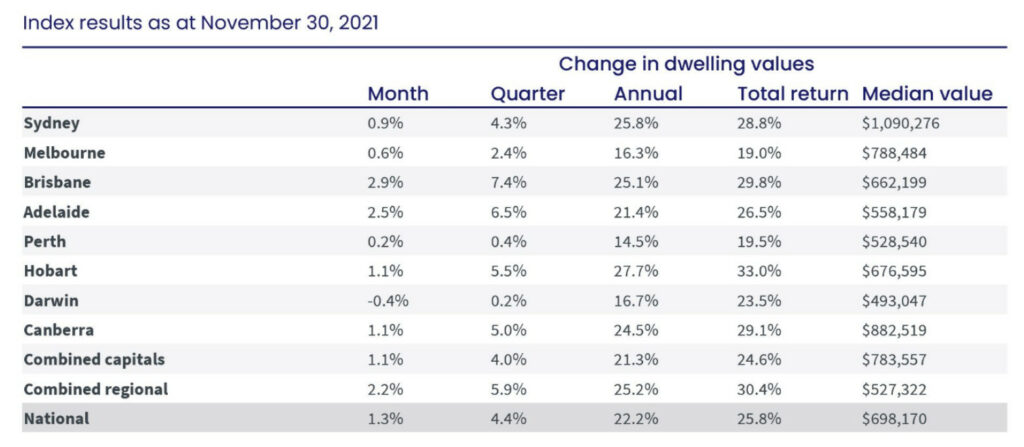
This high-level data only tells half the story. The declining growth largely reflects a sharp decline in the largest markets, Sydney and Melbourne. In these locations, affordability has become a significant issue and supply levels have all but returned to normal.
Other capitals – specifically Brisbane and Adelaide – are yet to experience a downtown. In fact, Brisbane’s 2.9% increase is the city’s largest in almost 20 years, and Adelaide’s 2.5% is its largest in nearly 30 years. This reflects each city’s relative affordability, increased demand due to significant migration from interstate, and ongoing issues with stock availability.
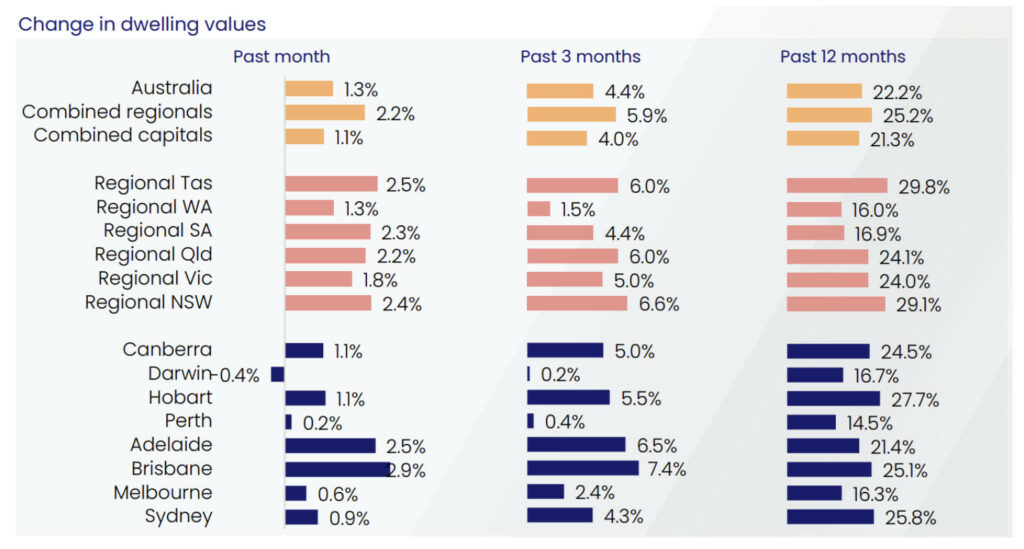
Things are also looking a little rosier in the regions, with monthly median price growth of 2.2% outside the capitals. This continues to be driven by the strong performance of lifestyle locations, like NSW’s Southern Highlands and Tasmania’s North-East region. Homes within commuting distance of a major city are particularly sought after as remote working continues to increase in popularity.
Another important point to note is the different fortunes of houses and units. In the capitals, the median house price is now a record 37.9%, or roughly $240,500, more than the median unit price. This is even more pronounced in Sydney, where the gap in average prices is now well over $500k.
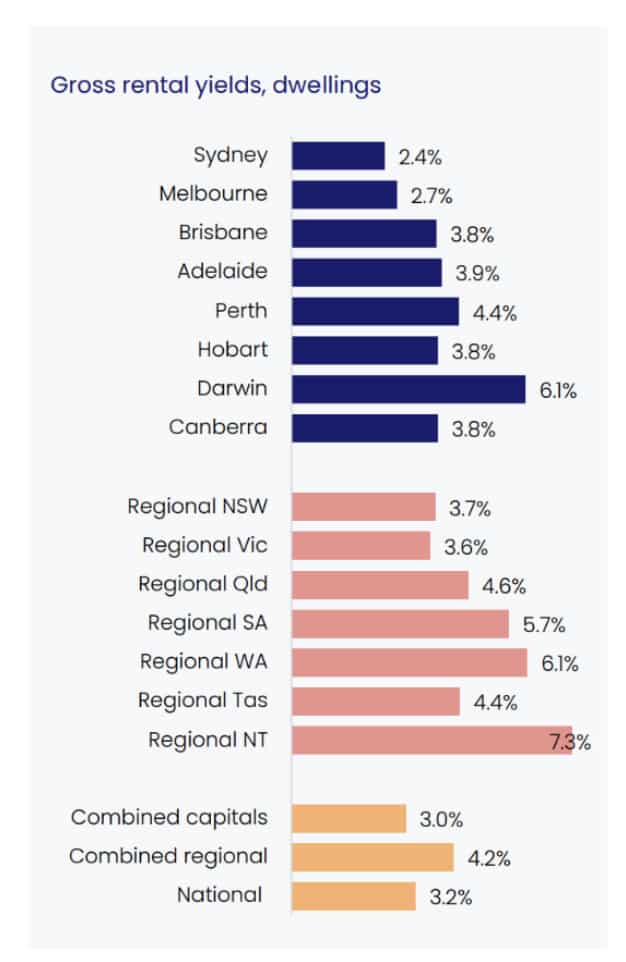
On the rental side, things are a little more complex with median rents up, but rental yields down. This is mostly because of the ongoing growth in sale prices, which has dwarfed rent rate increases, particularly in Sydney and Melbourne. As a result, the national median gross rental yield now sits at a record low 3.23%.
What to watch
Most property experts are now saying it is only a matter of time until property prices start to fall. However, the exact timing of this is still relatively unknown and will vary from state to state. This is because it will be driven by a variety of factors, including important administrative and financial trends:
- Interest rates: Put simply, the higher interest rates are, the less money buyers can borrow to purchase a property. And, while the RBA chose not to lift the cash rate right before Christmas, it cannot stay at 0.1% forever. The big banks have also already begun lifting interest on fixed rate loans, suggesting rates will rise sooner rather than later.
- Availability of credit: While increased interest rates can limit a buyer’s borrowing power, increased lending restrictions can impact their eligibility for a mortgage. These can take many forms, but one of the most common is increasing the interest rate “buffer”. The banking regulator, APRA, did exactly this last month, effectively cutting applicants’ maximum loan amounts by approximately 5%.
- Government support: Both State and Federal governments regularly set up schemes to stimulate the property market and improve access for certain market segments. Whether it is stamp duty reductions and other tax breaks or grants for buyers and builders, this funding increases market activity. Conversely, when these schemes wind down, activity can slow, which is what is happening with first home buyers right now.
There are also several factors that affect the market at a more local level. These relate to activity in a specific area and are responsible for the varying results you see across the country:
- Supply of new listings: Over the last 12 months, we have seen exactly how much of an impact limited availability of properties can have. This has been a major driver of growth in most of the highest performing areas over the last year. It has also contributed to the cooling of the Sydney and Melbourne markets, as sales stock levels return to normal.
- Demand: Working in opposition to supply, demand for properties in an area can also have a significant impact on market strength. This year, we have seen this in popular regional locations close to major cities, like the Gold and Sunshine Coasts. Here, demand has significantly outstripped supply, increasing competition for individual properties and significantly driving up purchase prices.
- Affordability: As property prices in an area increase, the pool of buyers that can afford them shrinks, effectively reducing demand. Higher prices can also cause buyers to question whether a property or area is actually worth the money. When combined, these two considerations can have a major impact on market activity, as we are currently seeing in Sydney and Melbourne.
Suburb Spotlight: Stafford (QLD)
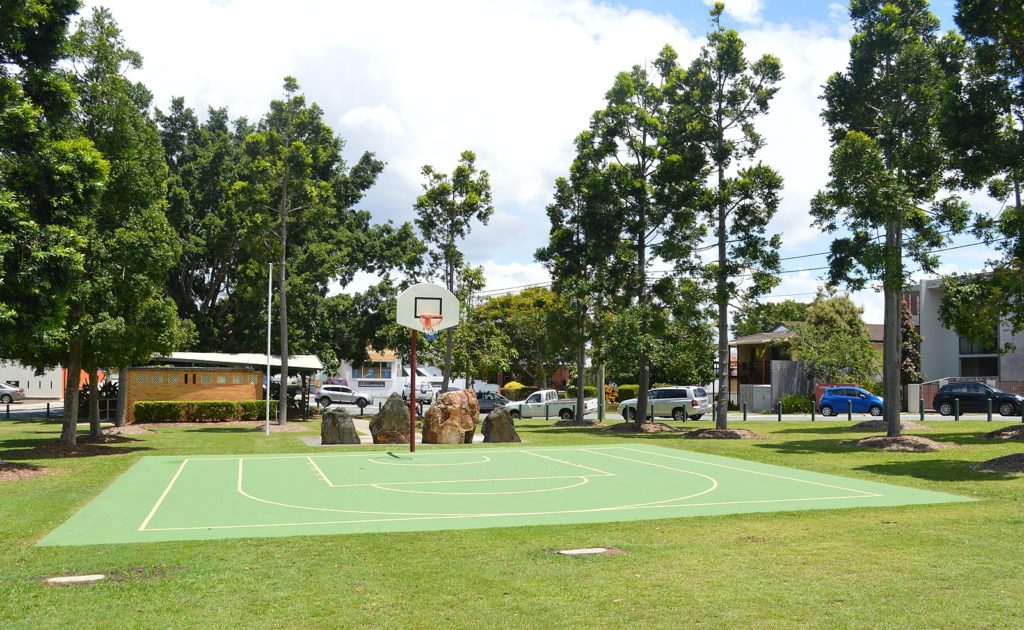
Part of Metropolitan Brisbane, Stafford sits surprisingly close to the city, a mere 8km North of the CBD. Despite this, it still offers great value for money, particularly when compared to many of the surrounding suburbs. But this is set to change, with the area experiencing a real renaissance and interest in local property significantly increasing.
Once a rural zone dominated by dairies and tanneries, Stafford has undergone a major transformation over the last few decades. It has largely shrugged off its industrial past and embraced a bright future as a mecca for foodies and coffee lovers. Now home to vibrant cafés and artisan retailers, it is widely considered one of the city’s coolest suburban enclaves.
For now, property in the area remains relatively affordable, with a median house price just short of $750,000. However, it may not stay this way for long, with prices increasing 13.56% over the last year. And this growth trend is expected to continue, with buyers drawn to the area’s ample green spaces and community feel.
In good news for investors, Stafford also has a strong rental market with almost half the local population living in rented accommodation. That said, the median weekly rent for a house in the area is $450, meaning a modest median yield of 3.12%. However, weekly rents are increasing, and the strong capital growth potential is sure to appeal to many astute investors.
At Search Party Property, we specialise in developing tailored investment strategies and will work with you to come up with a suitable plan of attack. We also regularly assess your strategy ensuring that it is fit for purpose and delivering the desired results.


